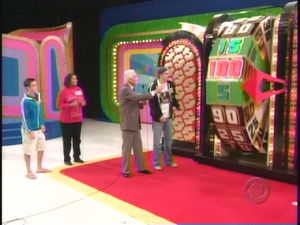Cabbage Patch Kids

1976:
As a 21 year old art student, Xavier Roberts rediscovers "needle molding" a German technique for fabric sculpture from the early 1800’s. Combining his interest in sculpture with the quilting skills passed down from his mother, Xavier creates his first soft-sculptures.
1977:
While working his way through school as manager of the Unicoi Craft Shop in Helen, Georgia, Xavier develops the marketing concept of adoptable Little People® with birth certificates.
1978:
Xavier begins delivering his hand made Little People Originals and exhibiting them at arts and crafts shows in the southeast. He finds that many parents are happy to pay the $40.00 "adoption fee" for one of his hand signed Little People Originals.
Xavier wins a first place ribbon for sculpture with "Dexter" at the Osceola Art Show in Kissimmee, Florida. Returning home to Georgia, he organizes five school friends and incorporates Original Appalachian Artworks, Inc. Xavier and his friends renovate the L.G. Neal Clinic, a turn of the century medical facility in Cleveland, Georgia, opening "BabyLand General® Hospital" to the public.
1981:
The growing success of Xavier’s hand made Little People Originals is documented by Newsweek, The Wall Street Journal, The Atlanta Weekly and many others. There are reports that earlier editions are re-adopting for as much as 100 times their initial adoption fee.
1982:
Original Appalachian Artworks, Inc. signs a long term licensing agreement allowing a major toy manufacturer to produce a Toy replica of Xavier’s hand made soft sculpture Originals. These Toy versions are recognizable by their smaller size, vinyl head and adoption fees usually under $30.00. At the same time, the name Little People® is changed to the "Cabbage Patch Kids®" which is used for both the Toys and the hand made Originals.
1983:
By the end of the year almost 3 million of the Cabbage Patch Kids Toys have been adopted but demand has not been met. The Cabbage Patch Kids Toys go on record as the most successful new doll introduction in the history of the toy industry. In December, they are featured on the cover of Newsweek.
1985:
The Cabbage Patch Kids join the Young Astronaut Program and "Christopher Xavier" becomes the first Cabbage Patch Kid to journey into outer space as a passenger on the U.S. Space Shuttle.
1990:
With 65 million Cabbage Patch Kids Toys adopted to date, their continuing popularity places the Cabbage Patch Kids Brand among the top 10 best selling of the year. Meanwhile the hand made Originals, with adoption fees of $190.00 and up, remain popular with collectors.
1992:
The Cabbage Patch Kids are honored by being named the first official mascot of the U.S. Olympic Team. They travel with the athletes to Barcelona for the games and many stay behind as "Friends For Life" with patients of a local children’s hospital.
1995:
The Cabbage Patch Kids are once again honored to be named the official mascot of the 1996 U.S. Olympic Team for the summer games in Atlanta. That same year Mildred, one of the earliest Little People readopts for $20,000.
1996:
For the first time ever, limited numbers of hand made Original Cabbage Patch Kids U.S. Team mascots are offered for adoption at fees of $275.00 each. These Originals represent 12 different Olympic Sports.
1999:
A nationwide public vote selects Cabbage Patch Kids as one of 15 stamps commerating the 1980’s in the U.S. Postal Service’s Celebrate The Century stamp program.
2000:
The Cabbage Patch Kids stamp goes on sale in January of 2000.
2001:
Original hand made Cabbage Patch Kids make their debut on the world wide web. Adoption fees range from $170.00 to $255.00 for regular editions.










































